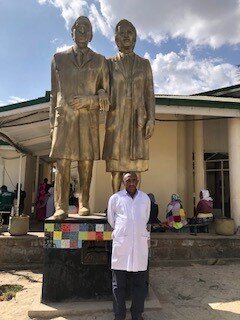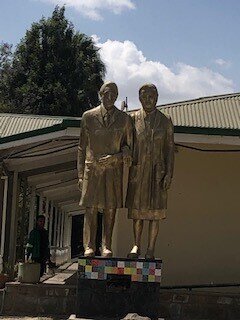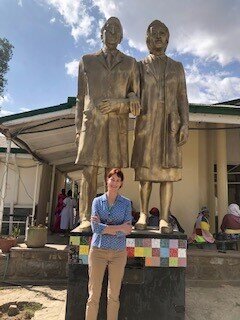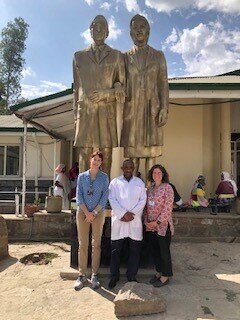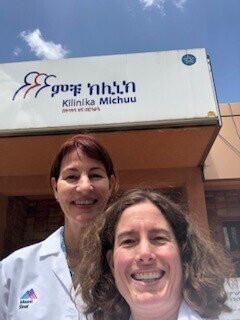Last week was a whirlwind of activity for me, with the Ethiopian Society of Obstetricians and Gynecologists (ESOG) Annual Meeting and two different friends coming into town. The ESOG meeting last year was actually my introduction to Ethiopia. I went straight from the airport to the Ethiopian Public Health Institute (EPHI) where the pre-conference sessions were being given. I had changed into my suit on the plane and then was desperately trying to stay awake in the audience after over 24 hours of travel.
This year I was much better rested and participated in some interesting ways. I moderated several sessions, including those presented by my dear friend, Pratima Gupta, who was discussing the role of Water, Sanitation and Hygiene in women’s health care. She and her adorable assistant (Nehru, her 7 year old son) were here and delighted everyone, especially me. Due to some unfortunate illness in our family, we were unable to have them for dinner, but it was truly great to see them. I also gave a presentation on male contraception innovation (thank you John Amory and Stephanie Page for your slides) and let me tell you, that’s not an easy sell to a largely male Ethiopian audience! It was the last presentation of the day, so I threw in some humor to engage them, but I’m not sure I converted anyone. On Sunday I also ended the day with a presentation on second trimester abortion management, and there was a lot of interest in that, in spite of the talk starting about 90 minutes later than scheduled. My fellows and I have done a lot of work to standardize our approach and apply all the available evidence to create a workable protocol. We hope to coordinate with the Ministry of Health to get a stamp of approval for this to become a national guideline.
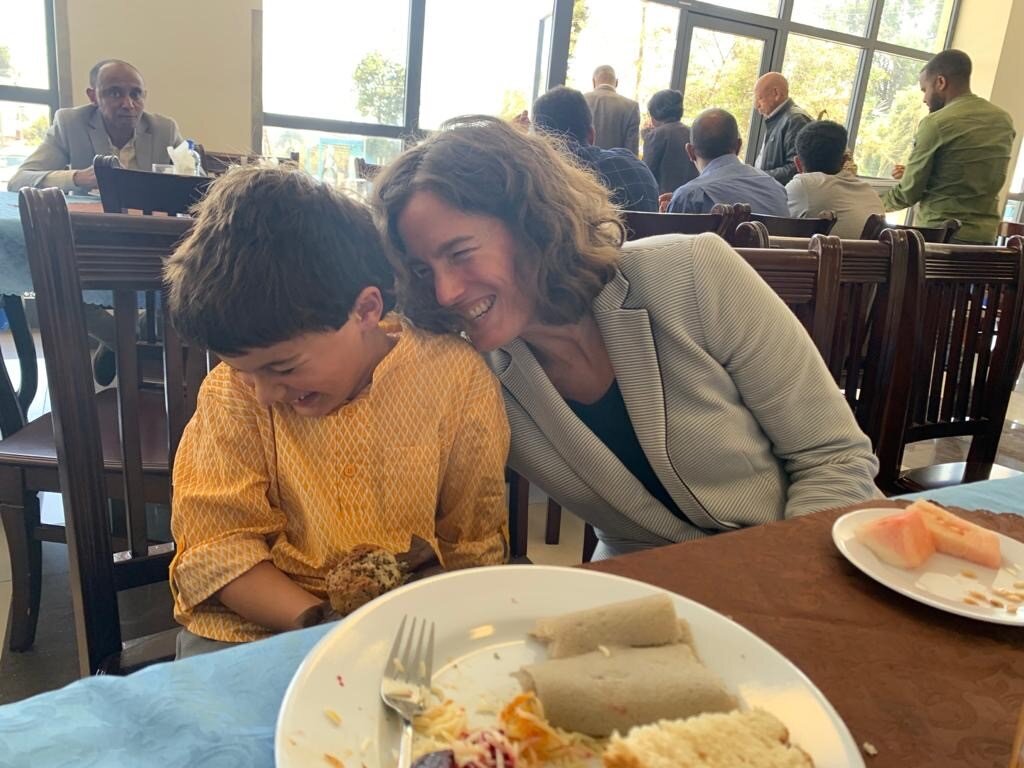
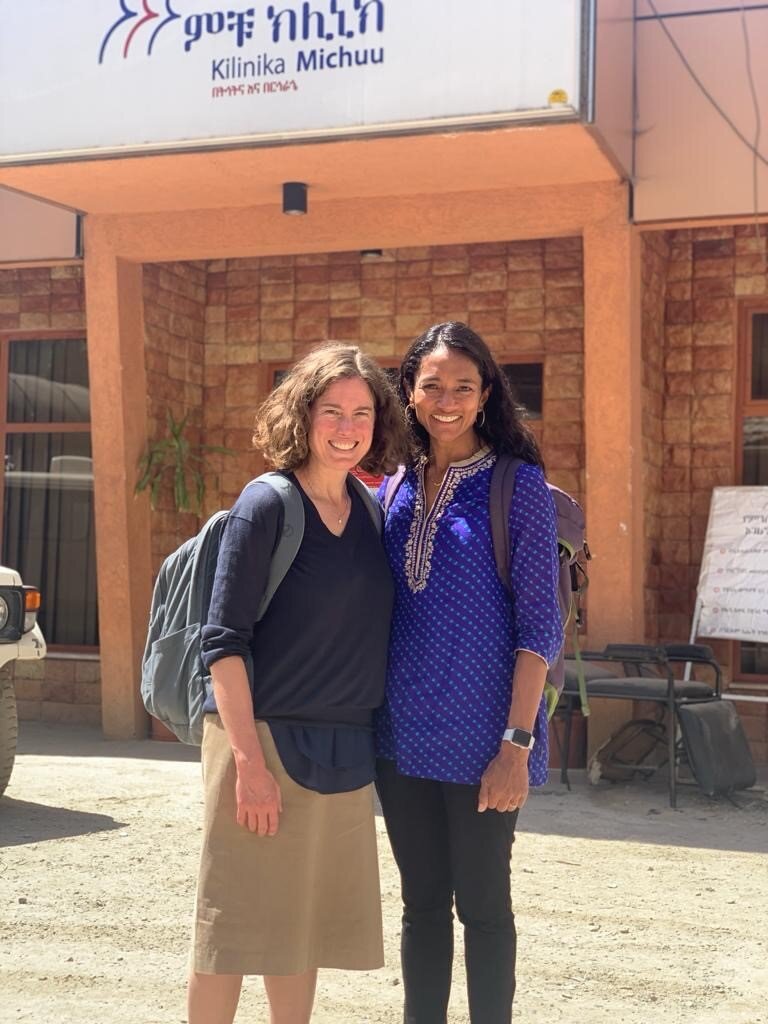
Sunday evening, I spent in something of a poorly hidden panic, as Maya complained of a persistent headache and when asked, mentioned it hurt her back when she tried to touch her chin to her chest. For those of you who are not medical, this can be a sign of meningitis, so I monitored her carefully, and checked on her every 1-2 hours through the night. She’s fine. Probably just a viral illness, which she now seems to have mostly kicked. The only highlight was that it gave Eric and me an opportunity to introduce her to the creepy song by Ween: “Spinal Meningitis Gets Me Down”. Check it out if you’re not already a Ween fan.
Monday marked the beginning of the actual ESOG meeting, and I was on a panel discussing reproductive health in Ethiopia. I was tasked with presenting a perspective on global reproductive health as relates to Ethiopia, and I shared the stage with some really interesting speakers. There was the Director of the Adama District Health Bureau, a former Ethiopian Supreme Court Judge, a disabilities rights activist, and an ESOG board member. I was questioned about the Global Gag Rule and how Ethiopian national health policies shouldn’t be so tied to whomever is in the White House, given how disruptive it is to broadly-reaching health care provision. I could only really say “sorry” and to recommend they tell all their friends and family in the US to keep that in mind when they vote in November!
The most inspiring moment of ESOG for me was definitely the awards presentations. Particularly the Lifetime Community Service award. Dr. Munir Kassa from the MOH presented the award to Mame with the following story. Mame grew up in a very rural village in the North of Ethiopia approximately 75 years ago. She had zero formal education. She was married at 14 to a man she met on her wedding night and soon after was pregnant. Her husband was kind, and she was happy. When she went into labor, something was wrong. After 4 days of labor, a birth attendant was able to come and help facilitate her delivery of a stillborn infant. Unfortunately, the trauma of the obstructed labor caused Mame to have a fistula between her bladder and her vagina, and she had no control over urination. This is relatively common in Ethiopia, as an adolescent pelvis often cannot accommodate a term pregnancy. Unfortunately, due to the dysfunction and smell, women with fistulas were and are often ostracized and/or neglected in their communities. Mame was lucky and her sister lived in Addis Ababa, where there was a new Fistula hospital built and operated by the Doctors Hamlin, Reg and Catherine, who were both OBGYNs, from New Zealand and Australia, respectively. More on them and the Hamlin Fistula Hospital in a moment. Mame made her way there and was able to have her corrective surgery. While she was recovering, she made herself useful in whatever ways were needed; cleaning the wards, washing the laundry, cooking for the other patients. Eventually she worked her way up to more exacting jobs, and soon was processing instruments and working as a nurse’s aide. Eventually she was a surgical assistant to the Hamlins, as well as translator (as they didn’t speak Amharic). By the 1980’s, she was primarily operating on most of the women coming with fistulas. Not only that, but OBGYN residents from around Ethiopia began rotating through Hamlin Hospital to learn how to do fistula repair and Mame, this woman with absolutely no formal education, has now taught several generations of Ethiopian OBGYNs how to repair a fistula. Mame never went back to live in her village, telling her husband she found her calling at the Fistula Hospital. Mame, now about 75 years old, and about 4 foot 2 inches tall, was present at the ESOG meeting on Monday. Every OBGYN there adores her. She not only was given the service award but was made an honorary member of ESOG – a lovely and fitting tribute to this amazing woman. See some of the attached photos of this emotional event.
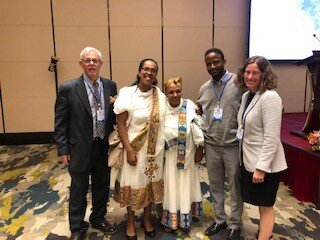
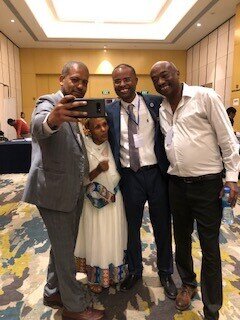
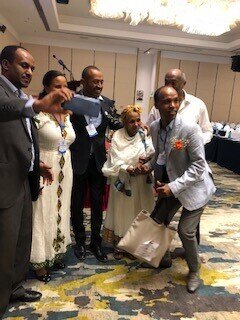
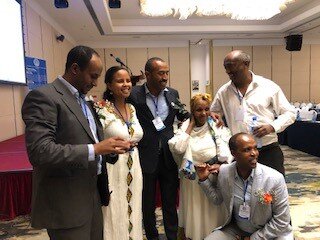
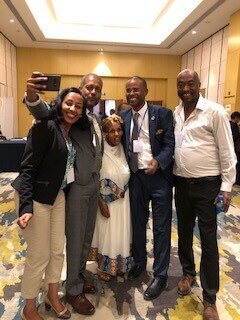
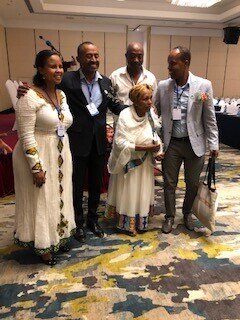
Later last week, I was lucky to also have my dear friend Laura MacIsaac come to visit. Laura is the third ever family planning fellow (after Dilys Walker and Mitch Creinin) and has become a good friend in the past 10 years or so. To round out the story of the Hamlin Hospital, Laura asked if I could set up a visit, as she had spent 6 weeks there as a resident 25 years ago. Dr. Reg Hamlin had died by then, but Dr. Catherine Hamlin was still operating, as was Mame! Laura and I, plus two lovely medical students from the University of Michigan who are here for 8 weeks working on Family Planning research, went there on Thursday afternoon and had a truly inspiring visit. The hospital has been set up to deal holistically with all of the issues facing patients, not just to repair their primary anatomic injury. Often, partially due to the neglect that can come after having a fistula, patients are severely malnurished and deconditioned when they arrive at the hospital. They will then spend weeks to years getting healthy before they undergo their surgery, as there is really only one best chance to do the repair well and have it last. After the surgery, they may also have a long recovery before they are completely ready to return to their usual life. The hospital has clinical psychologists and a psychiatrist on staff, they have two full time physical therapists, there is a urodynamics center, a laboratory and a pharmacy. Typical capacity is 110 patients, though in a pinch they can accommodate twice that. Once they help a patient, they take care of her for life – if she conceives again, she returns to the Hamlin Hospital for her cesarean delivery to spare her repair. If she develops prolapse, she can return for that care as well.
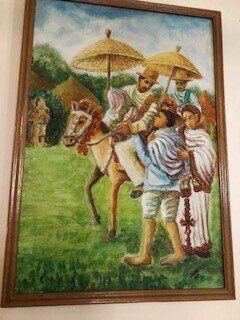
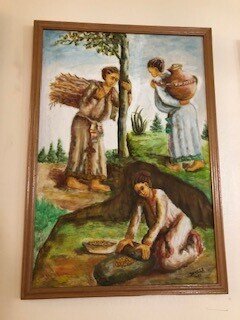
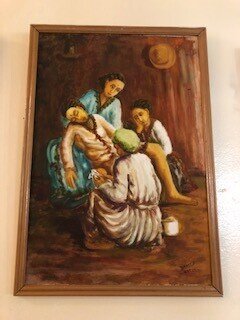
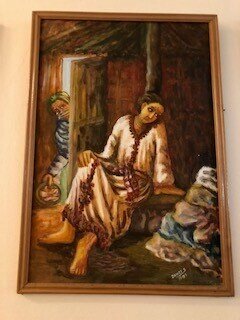
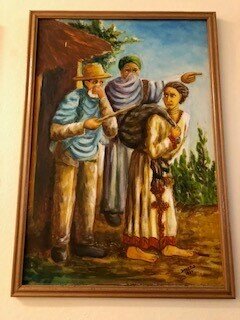
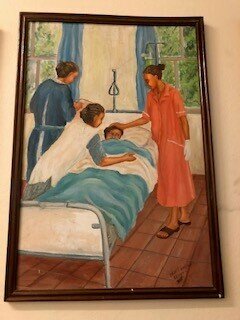
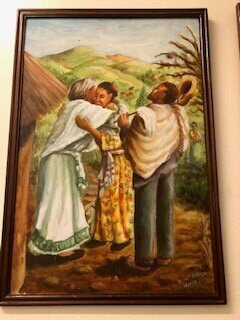
The hospital provides basic education in reading, writing and simple math. It also teaches the patients a craft, and those crafts are sold so the patients can make money. And 100% of the care is free, paid for through donations. If you are interested, there is a book written by Catherine Hamlin called “The Hospital by the River: A Story of Hope” about the Hamlin Hospital, and there is also a documentary called “A Walk to Beautiful”. I encourage everyone to learn more - this is definitely a truly amazing, person-centered, holistic care facility I’ve not seen anywhere else in the world.

